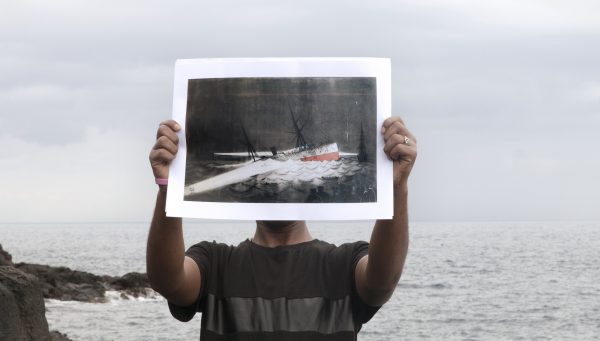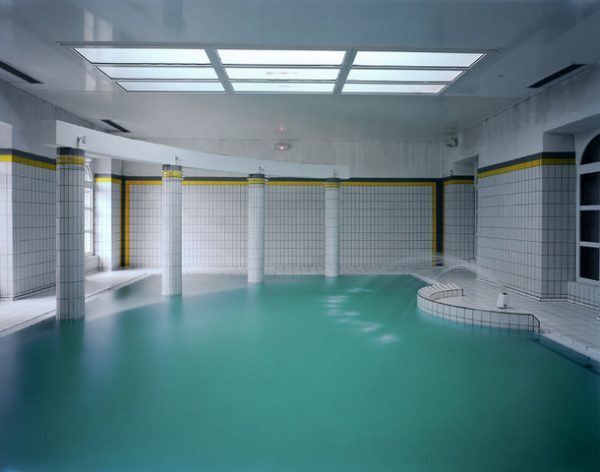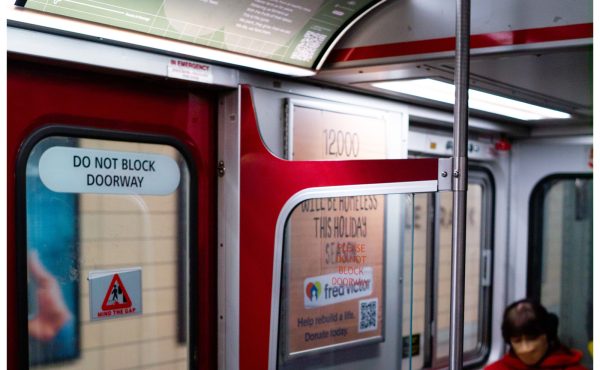When COVID anxiety was at its peak in late March and early April, photographs of empty public spaces proliferated on social media feeds and news outlets. Described as “the dominant visual language of the corona virus pandemic,” these photos attempted to capture a collective phenomenon, an experience that seemed to evade verbal or written articulation. What, then, were we trying to understand? What was this elusive, photographic language of the corona virus trying to say?
Any attempt to describe (in words) a phenomenon that arose from a certain sense of inexpressibility may be bound to fail. But one way to approach the subject is to explain the language of photography itself. In their article discussing the photos of empty public spaces, Cherine Fahd and Sara Oscar argued that “photographs have always provided us with an alternative view of the world without us.” These images of empty public spaces, then, are in keeping with usual function of the photographic medium, wherein a mechanical process (i.e. photography) captures the realities of a world that we cannot gain access to ourselves.
While the unnerving beauty of vacant public spaces is slowly changing from a present experience to a past remembrance, the haunting images documenting that period provide us with an opportunity to reflect on the unique power of the medium. It’s interesting, then, to look at this year’s CONTACT Photography Festival, and to explore how some of the festival’s exhibitions may retrospectively speak to our new pandemic-ridden world.
Of course, CONTACT, in the wake of the virus, has had to reshuffle its programming. In a phone interview, curator Bonnie Rubenstein noted that many exhibitions organized this year will be pushed back to 2021, and those that for logistical reasons cannot be postponed to a later date will be transferred to online gallery exhibitions.
Greg Staats’ public installation, initially set for exhibition at the Todmorden Mills Heritage Site, is one of many works postponed because of the virus. Linking the displacement and attempted cultural erasure of the Hodinǫhsǫni (Haudenosaunee) to the paper mill fire at Todmorden Mills in 1900, Staat’s planned installation reflects upon themes of reconciliation, healing and the interconnectedness of histories. In this work, Staats had aimed to create a restorative aesthetic in keeping with his Hodinǫhsǫ:ni heritage, particularly the Hodinǫhsǫ:ni Condolence ceremony that enables its attendees to “breath clearly,” a much-needed remedy for the physical, psychological and spiritual ailments of these times.

Dawit L. Petros’ photographic work, currently exhibited on the south façade of the Power Plant Gallery, also explores the interconnectedness of histories. Petro’s work Untitled (Overlapping and intertwined territories that fall from view III), shows Mokhtar, a migrant from Eritrea, holding up an etching of a sinking ship from 1891. The travelers on this ship, painfully named the SS Utopia, had largely consisted of poor Italian workers seeking a better life in North America. This image is connected to the current plight of East African migrants, such as Mokhtar, who are trying to find refuge in Italy.
Both Staats and Petros’ work highlight the links between seemingly disparate events and histories. In a similar vein, COVID-19 is revealing the interconnectedness of systems and peoples, forcing an entire globe to confront an immanent threat through collective measures.
The photographs in Lynn Cohen’s Fortifications, one of CONTACT’s featured exhibitions now transitioned online, captures a dreamy desolateness similar to the photos of empty public spaces. The works on view in this exhibition are emblematic of Cohen’s signature style, with photos of barren spas, vacant condo lobbies and sparse, starch white bedrooms. These images, beautiful in their suggestion of quietude, also entail our absence. Much like the social media photographs of empty public spaces, we as viewers are aware that our entrance into these spaces would destroy the seductive emptiness that sparked our initial desires.
While we can talk about the conceptual undertones of Staat’s installation, or view the Cohen exhibition through an online forum, neither of these measures can replace the experience of seeing these works in person. “You could say that ‘oh photography, it’s easier than other artforms to adapt to an online environment,’” remarked Rubenstein, “and of course we all take much enjoyment from things we see online, but it doesn’t replace an exhibition. The public installation at its core is about a relationship we establish between the work and the environment. This applies to photographs in a gallery too. It’s about a relationship between images that you don’t have when you look at something online. It’s a physical relationship, a social relationship. There’s often a certain tactile and aesthetic quality to the work that you can only get from seeing it in person. That’s not to say you don’t get great things online too, they’re just new and different.”
If anything, then, the forced reimagining of CONTACT’s 2020 exhibitions further underlies the very themes that were already present in some of the exhibitions for this year’s festival, motifs such as interconnectivity, displacement, and alienation. In 2021, we will hopefully experience these themes together, rather than apart.
For CONTACT’s online programming, click here.
Sarah Ratzlaff is Spacing’s public art critic. Follow her on twitter @ratzlaff_sarah




